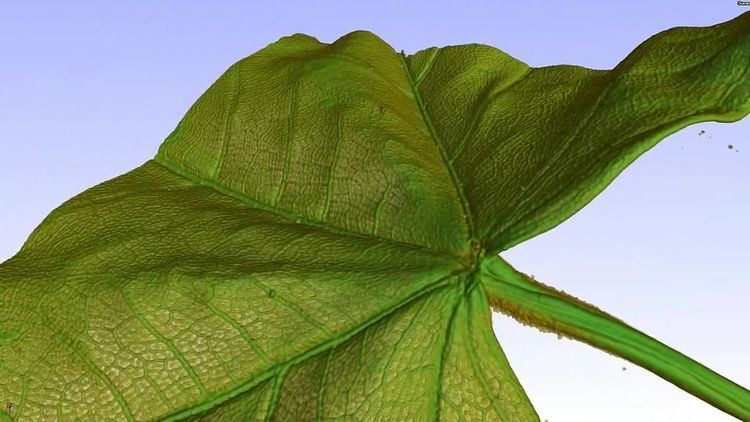 | ||
X-ray microtomography, like tomography and x-ray computed tomography, uses x-rays to create cross-sections of a physical object that can be used to recreate a virtual model (3D model) without destroying the original object. The prefix micro- (symbol: µ) is used to indicate that the pixel sizes of the cross-sections are in the micrometre range. These pixel sizes have also resulted in the terms high-resolution x-ray tomography, micro–computed tomography (micro-CT or µCT), and similar terms. Sometimes the terms high-resolution CT (HRCT) and micro-CT are differentiated, but in other cases the term high-resolution micro-CT is used. Virtually all tomography today is computed tomography.
Contents
- Fan beam reconstruction
- Cone beam reconstruction
- Open X ray system
- Closed X ray system
- The principle
- Image reconstruction software
- Volume rendering
- Image segmentation
- Archaeology
- Biomedical
- Electronics
- Microdevices
- Composite materials and metallic foams
- Polymers plastics
- Diamonds
- Food and seeds
- Wood and paper
- Building materials
- Geology
- Fossils
- Microfossils
- Space
- Stereo images
- Others
- References
Micro-CT has applications both in medical imaging and in industrial computed tomography. In general, there are two types of scanner setups. In one setup, the X-ray source and detector are typically stationary during the scan while the sample/animal rotates. The second setup, much more like a clinical CT scanner, is gantry based where the animal/specimen is stationary in space while the X-ray tube and detector rotate around. These scanners are typically used for small animals (in vivo scanners), biomedical samples, foods, microfossils, and other studies for which minute detail is desired.
The first X-ray microtomography system was conceived and built by Jim Elliott in the early 1980s. The first published X-ray microtomographic images were reconstructed slices of a small tropical snail, with pixel size about 50 micrometers.
Fan beam reconstruction
The fan-beam system is based on a one-dimensional (1D) X-ray detector and an electronic X-ray source, creating 2D cross-sections of the object. Typically used in human computed tomography systems.
Cone beam reconstruction
The cone-beam system is based on a 2D X-ray detector (camera) and an electronic X-ray source, creating projection images that later will be used to reconstruct the image cross-sections.
Open X-ray system
In an open system, X-rays may escape or leak out, thus the operator must stay behind a shield, have special protective clothing, or operate the scanner from a distance or a different room. Typical examples of these scanners are the human versions, or designed for big objects.
Closed X-ray system
In a closed system, X-ray shielding is put around the scanner so the operator can put the scanner on a desk or special table. Although the scanner is shielded, care must be taken and the operator usually carries a dosimeter, since X-rays have a tendency to be absorbed by metal and then re-emitted like an antenna. Although a typical scanner will produce a relatively harmless volume of X-rays, repeated scannings in a short timeframe could pose a danger. Digital detectors with small pixel pitches and micro-focus x-ray tubes are usually employed to yield in high resolution images.
Closed systems tend to become very heavy because lead is used to shield the X-rays. Therefore, the smaller scanners only have a small space for samples.
The principle
Because microtomography scanners offer isotropic, or near isotropic, resolution, display of images does not need to be restricted to the conventional axial images. Instead, it is possible for a software program to build a volume by 'stacking' the individual slices one on top of the other. The program may then display the volume in an alternative manner.
Image reconstruction software
For X-ray microtomography, powerful open source software is available, such as the ASTRA toolbox. The ASTRA Toolbox is a MATLAB toolbox of high-performance GPU primitives for 2D and 3D tomography, from 2009–2014 developed by iMinds-Vision Lab, University of Antwerp and since 2014 jointly developed by iMinds-VisionLab, UAntwerpen and CWI, Amsterdam. The toolbox supports parallel, fan, and cone beam, with highly flexible source/detector positioning. A large number of reconstruction algorithms are available, including FBP, ART, SIRT, SART, CGLS.
Volume rendering
Volume rendering is a technique used to display a 2D projection of a 3D discretely sampled data set, as produced by a microtomography scanner. Usually these are acquired in a regular pattern (e.g., one slice every millimeter) and usually have a regular number of image pixels in a regular pattern. This is an example of a regular volumetric grid, with each volume element, or voxel represented by a single value that is obtained by sampling the immediate area surrounding the voxel.
Image segmentation
Where different structures have similar threshold density, it can become impossible to separate them simply by adjusting volume rendering parameters. The solution is called segmentation, a manual or automatic procedure that can remove the unwanted structures from the image.
